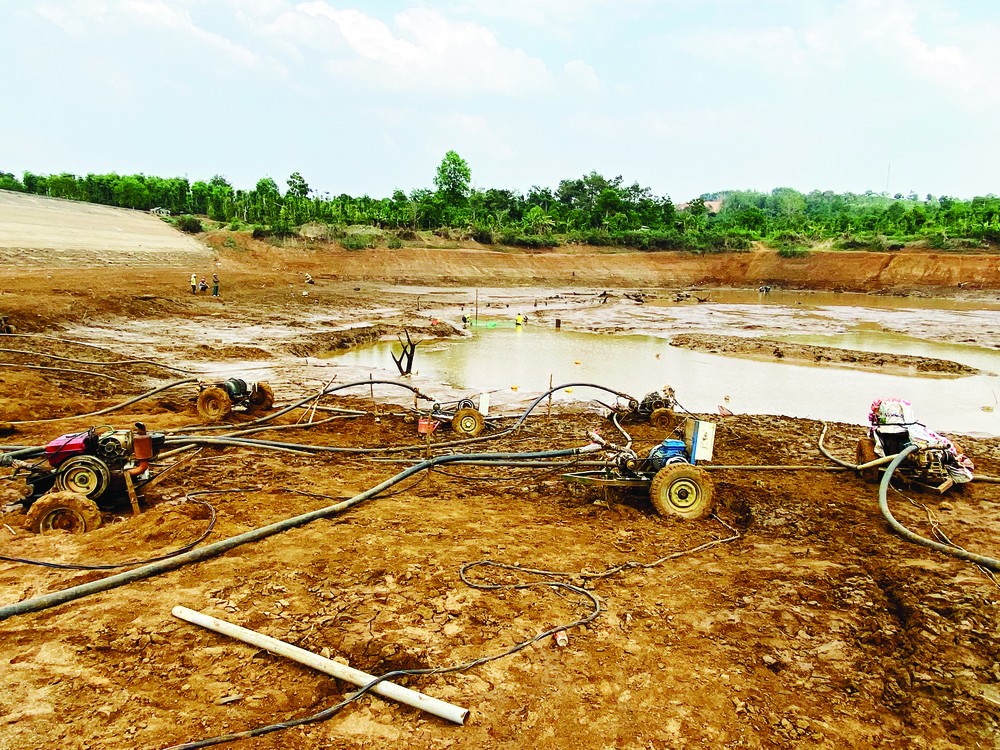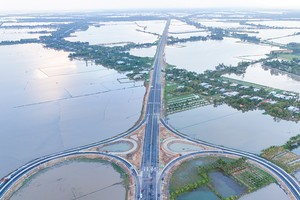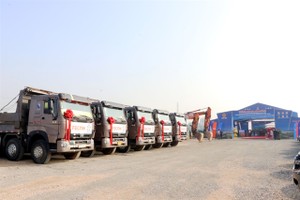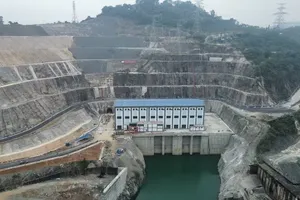
The National Center for Meteorological and Hydrological Forecasting announced that until the afternoon of March 30, the Southern region was hot at 35-37 Celsius degrees with the common humidity from 50 percent to 55 percent.
After days of extreme weather with thunderstorms and hail, from the afternoon of March 31, hot weather will battle the Northwest region and the area from Thanh Hoa Province to Phu Yen Province, starting a series of days of widespread and extended heat across the country.
It is forecasted that on April 1, the highest temperature in the Northwest and Central regions will exceed 38 Celsius degree, with intense heat and humidity of 45 percent-50 percent with the highest temperature in the Northeast and the South fluctuating around 35-37 Celsius degree and humidity hitting 50 percent -55 percent. The Central Highlands region has a partial heatwave with the highest temperature in some places being over 35 Celsius degree.
According to the meteorological bureau, this year, the intensified heat at the beginning of the season came earlier than usual in the North which would embrace the peak of the relentless heat wave on April 2. By April 5 or 6, the North may enjoy cool rain thanks to cold air. It is highly likely that hail will battle the region meanwhile the hot weather continues in the South without signs of significant rain.
According to the Southern Institute of Irrigation Sciences, late March and early April 2024 is the peak of the dry season and saltwater intrusion. So far, farmers have sown more than 276,000 hectares of summer-autumn rice in the Mekong Delta provinces of Dong Thap, Long An, Tien Giang, Can Tho, Kien Giang, and Vinh Long.
Faced with this situation, the Southern Institute of Irrigation Sciences recommends that localities consider delaying the summer-autumn sowing schedule to reduce the need for water for production and limit damage due to saltwater intrusion which has far penetrated into coastal estuaries.
According to Director Le Ngoc Quyen of the Southern Regional Hydrometeorological Station, there will still be little rain in April 2024 meanwhile hot weather will continue ravaging the southern region. From now until the end of May 2024, the Mekong Delta will still see saltwater intrusion with a saline level of 4‰ in inland areas 45-95km from estuaries from April 8 to 14.
Local administrations have sent reports on the damage caused by natural disasters to the Standing Office of the National Steering Committee for Natural Disaster Prevention in the provinces of Ha Giang, Lao Cai, Son La, Yen Bai, Phu Tho, Nghe An, Ha Tinh, Quang Tri, Thua Thien Hue.
According to reports, two people were injured by thunderstorms and hail in Lao Cai and Phu Tho by March 30 and more than 2,200 houses had their roofs blown off by thunderstorms and nearly 2,700 hectares of rice, crops, and forestry trees were destroyed.
Thousands of hectares of fruit-bearing plums in Son La Province’s Moc Chau District were damaged due to hail. The price of plums picked from branches in localities is currently priced at VND50,000-VND60,000 a kg, but many orchard owners now have to sell fallen young plums for only VND 1,000 per kg.
The Department of Agriculture and Rural Development of Dak Nong Province said due to high temperatures and low air humidity, the level of water in rivers and streams continues to decrease; worse, many small rivers and streams have even dried up, and water reserves in irrigation reservoirs are rapidly decreasing.
According to forecasts of the Dak Nong Provincial Hydrometeorological Station, from now until the first half of May 2024, the water levels of rivers and streams in the province will continue to decrease.
In the coming time, if the hot weather continues for a long time, there will be drought and water shortages in some areas such as Dak Mil, Cu Jut and Krong No districts. As a consequence, more than 6,000 hectares of crops such as coffee and fruit trees are at risk of lack of irrigation water.
























